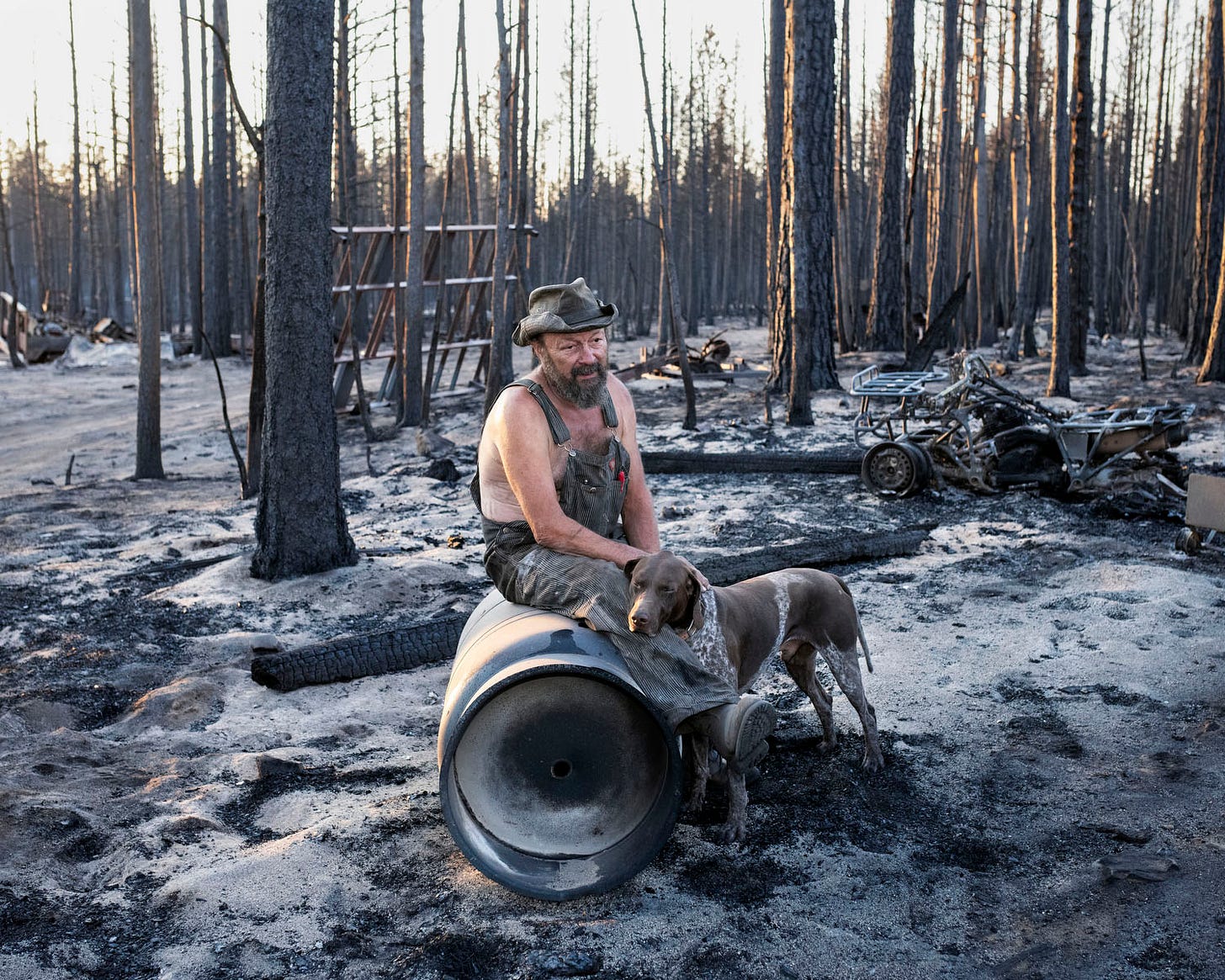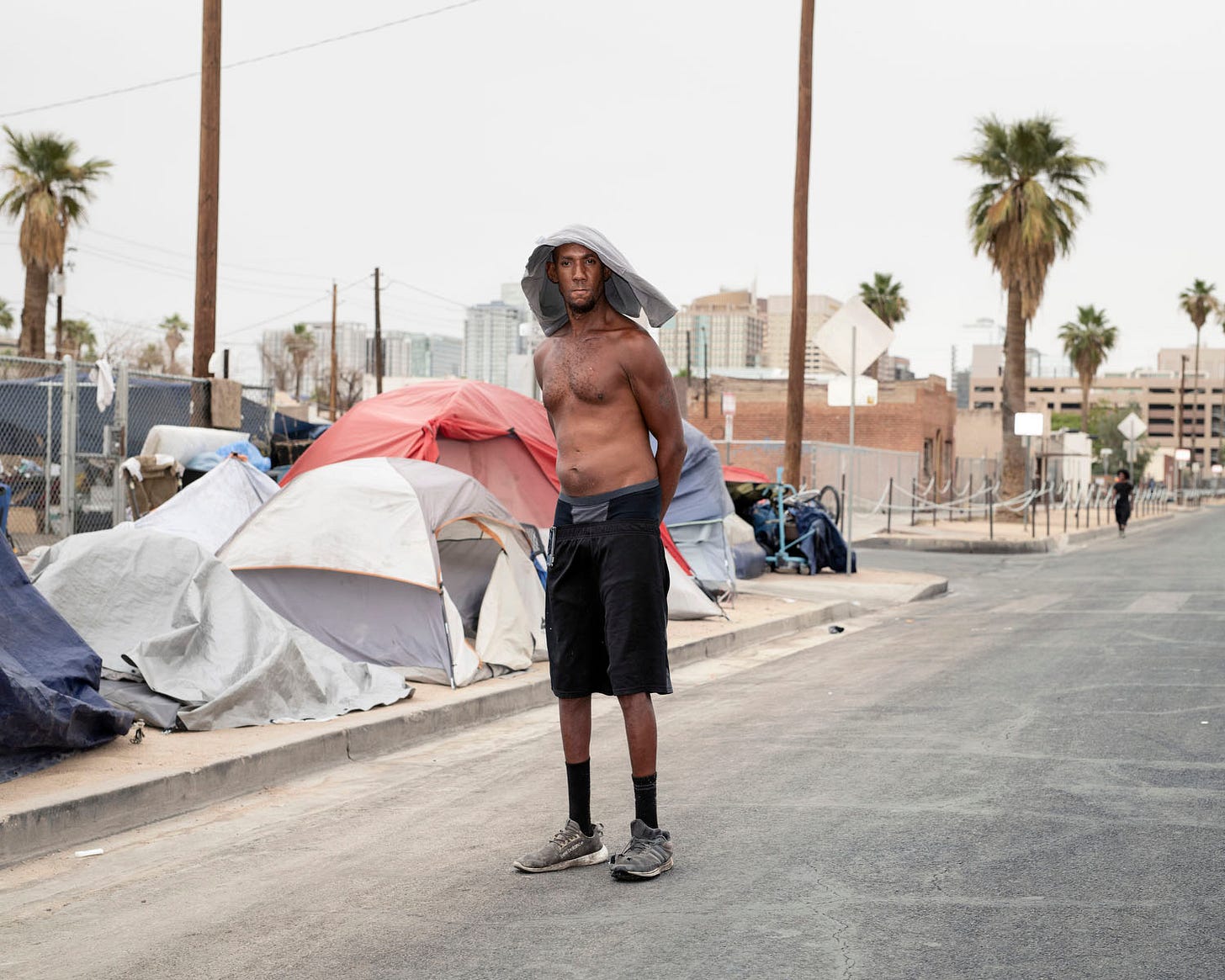Chasing Climate Change in the American West
I was on the road for five weeks trying to figure out how to capture intimate moments in a global catastrophe

On a grey March morning, I met with Andrew Katz, the deputy director of photography for TIME magazine, at a coffee shop in Brooklyn. We’d already had some informal conversations about pursuing a climate change story about the American West as an extension of a story we worked on together about drought in Australia in 2018. Now, summer was approaching, and the issue felt pressing.
Almost two-thirds of the country had experienced abnormally dry conditions the previous month, marking the highest mid-March level in nearly two decades. Almost half of the U.S. was experiencing moderate to severe drought conditions. Precipitation levels during the summer and winter months across the West had been far below average. In California, where residents and industries depend on water reserves, state reservoirs were at record lows. In the Colorado River Basin, snowpack began melting before its anticipated seasonal start date. Water cuts were expected. Officials were warning of another disastrous—and expensive—wildfire season.
The theme of “heat” underpinned the story we conceptualized: America’s warming cities, life amid extreme weather, and the worsening megadrought in the United States. In the coming days, I scribbled these words and phrases in my notepad: end of civilization, environmental destruction, human versus nature, apocalyptic, consumption, consumerism, fear, exhaustion. In hindsight, they sound dramatic, but they are the things our species already faces.

To tell this story, Andrew and I knew I needed to be on the ground for an extended period and be flexible with the weather. We also knew that we needed financial help to achieve this project due to current editorial budgets. I received a reporting grant from the Pulitzer Center with a commitment from TIME to publish the story.
On June 2, I boarded a flight to Las Vegas for a forecasted heatwave in the area; the next day, McCarran International Airport reached 108 degrees, breaking the record of 107 set in 2016. I had started the work a week early due to the heatwave, and I only had a rough shot list for Nevada, Arizona, and Utah: Lake Mead, Hoover Dam, Lake Powell, sweaty people on the Vegas strip, air-conditioners, water use, Navajo Nation, heat relief stations, homeless in Phoenix, construction and urban sprawl, wildfires fires, ranchers in Utah drought, workers in extreme heat. I didn’t want to head out and make literal didactic images of these specific things, but I did need subjects as guideposts when I walked out my hotel door each morning. This shot list initially served as a road map.

The work came slow. During the first week, I wandered up and down the Vegas Strip in sweltering conditions. I wasn’t happy with the photos I made because I felt they could have been taken on any hot day in Vegas. They didn’t speak to the broader idea of climate change by alluding to the critical issues behind daily life. Then I went out with an air conditioning repairman for a full day but couldn’t find a moment or scene that engaged me. The signifiers weren’t there, and the scene didn’t reveal the duress that extreme heat caused for manmade environments.
I called my editor and freaked out. “I’m failing,” I said. Andrew and I had worked on five cover stories together since 2018, so he probably anticipated the call. Every time I start a project, I spiral into intense doubt and grapple with the validity of the work I am making. As a younger photographer, I would often let this creative anxiety undermine my belief in the process. As I have gotten older, I have improved at managing my fear of failure and the only way through it is to keep working. Andrew told me to keep going and assured me I would find it.
In Phoenix, Andrew had researched heat deaths through a local community advocate, Stacey Champion, and she helped me find the addresses of the deceased. I began knocking on doors. In Goodyear, a half-hour drive from downtown Phoenix, I approached the concrete single-story home of John Ramer, 69, who had died there six days earlier of heat-related causes. I wasn’t sure if any family still lived there, so I knocked, but no one was home. An American flag hung as a curtain over one of the windows. Finally, a neighbor approached and gave me the phone number of John’s stepson, Jody Marquess. I visited him at his home nearby, and Jody told me his step-father was a simple man who was so frugal he didn’t want air conditioning. On June 17, Jody stopped by and installed a portable AC unit for his step-father, sleeping. Two hours later, when he returned to drop off ice cream, John was dead. It was 118°F that day.

I asked Jody if he could take me to his father’s house and sit for a portrait, and when we entered the house he sat in the chair where his step-father died, unprompted. We chatted and I took some photos of Jody sitting there, but then asked him to stand near the window. When he did he gazed down at where his father passed. The simple act of him looking at the empty space where his father spent his final moments was less performative than his previous posture.
When I had set out on the project I had presumed it would be a predominantly landscape project—dams with low water levels, drone landscapes depicting floods and parched earth, dramatic wildfires, and so on. But after making the portrait of Jody Marquess, I realized I also needed to make a record of climate change that was intimate and personal—to give insight into the humans living through the consequences of climate change now.
As I continued the work, I gravitated towards portraiture. In Phoenix, I asked a homeless man to stand in the street. Andrew found the friend of a man who had died from heat complications in Palm Springs, and the subject, Jill Langham, sat for me. I traveled as far north as the Pacific Northwest, where a historic heatwave would kill hundreds, and returned for an additional trip to cover the Dixie Fire in California and the Bootleg Fire in Oregon.
When I began this project, a month felt like an ample amount of time. But the hours evaporated over states and miles, and I had to leave things untouched. I could have continued for another month, another year. There was just so much work to do over so much ground. I knew going into this project that we had the responsibility of telling an epic story—I just underestimated how epic the task at hand was.
I made 11,303 photos in total, a daunting amount of images to edit and articulate into a cohesive photo essay. When I returned to New York, Andrew and I began the long and arduous process of pulling it all together, which I’ll detail in my next post.




11,303 photos. 🤍
Great work Adam. Persistence and patience pay off for these amazing portraits.